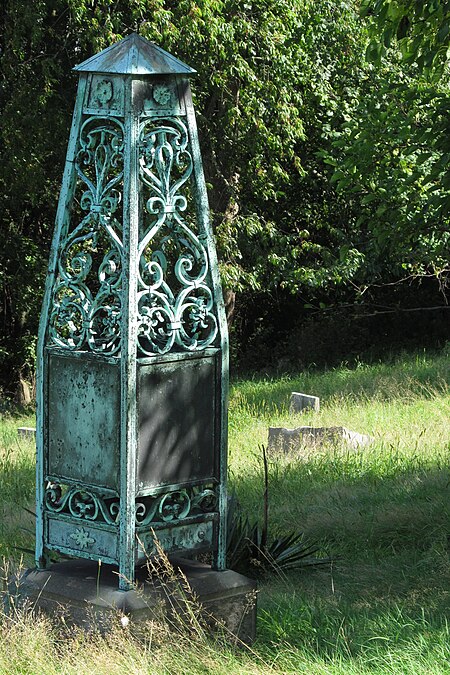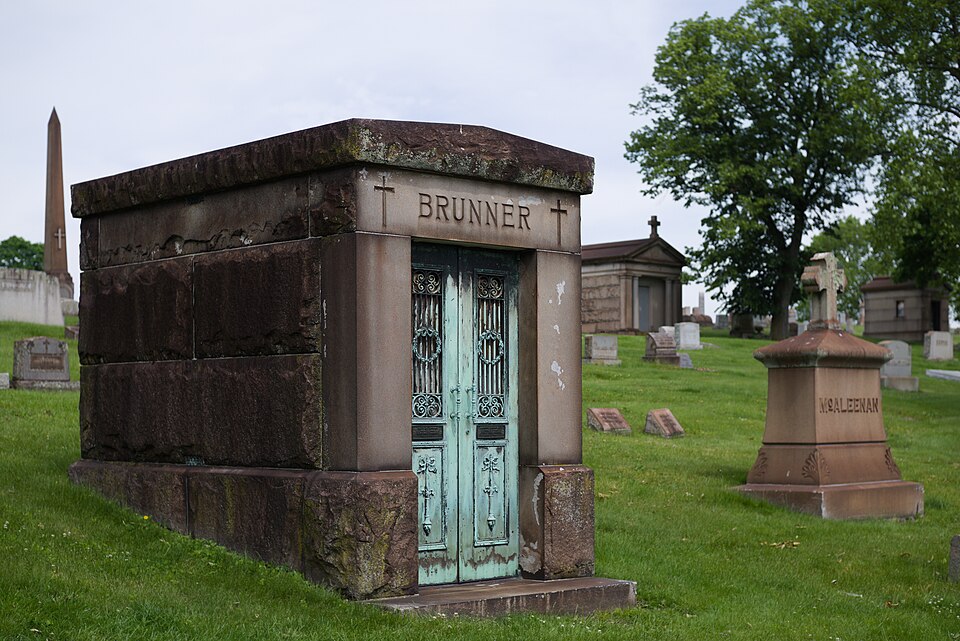
A little mausoleum with a fine pair of bronze doors.
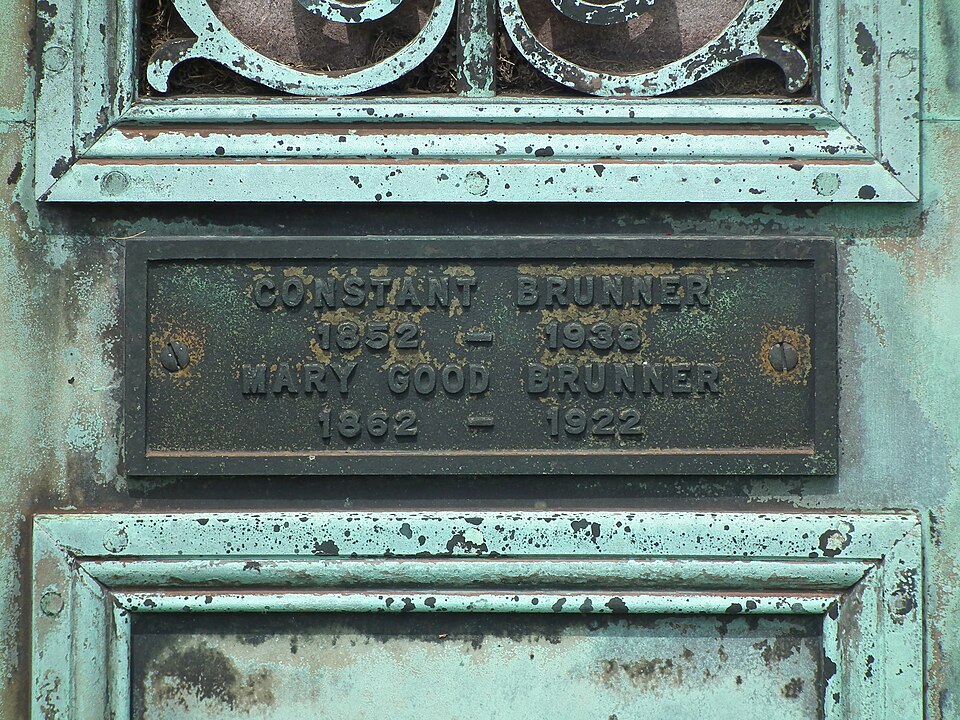
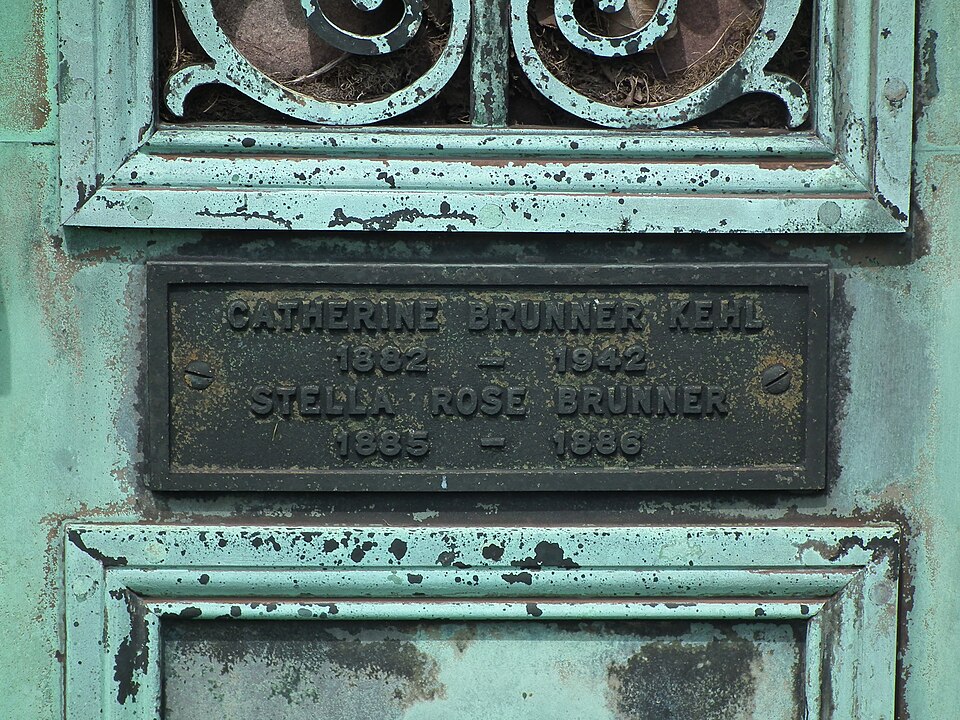
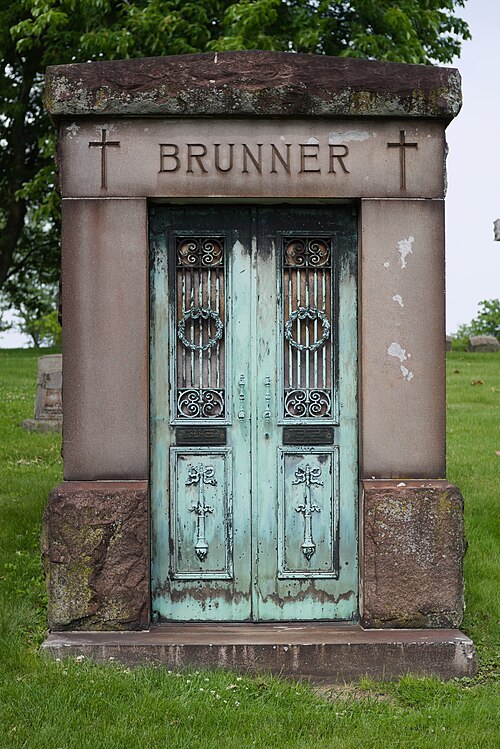
Comments
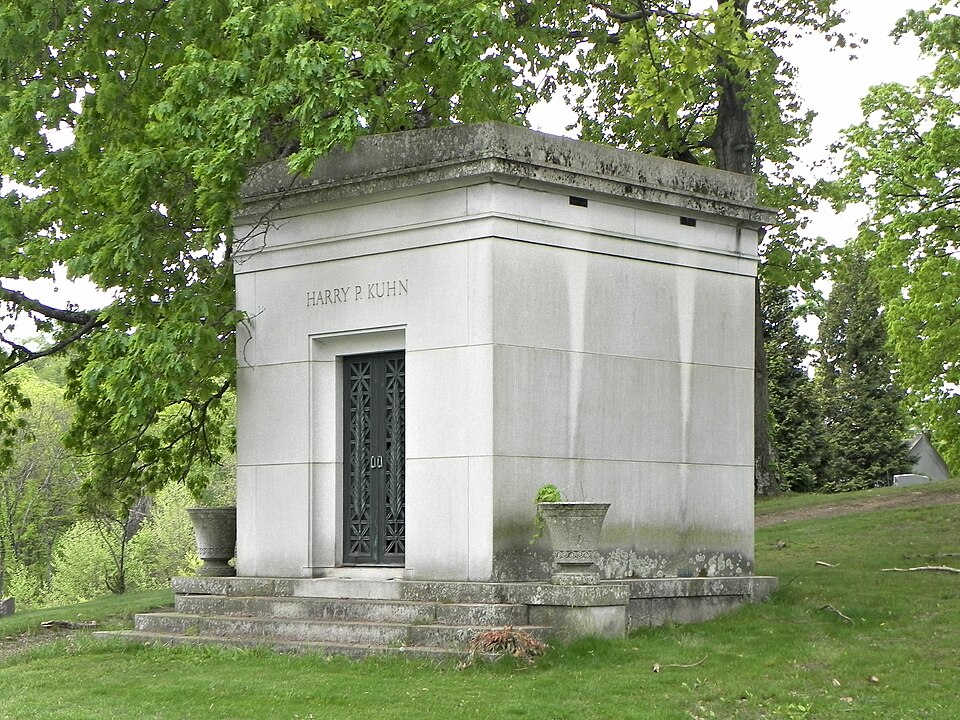
A simple and timeless design, classical but not classicist because it does not subscribe to any ism.
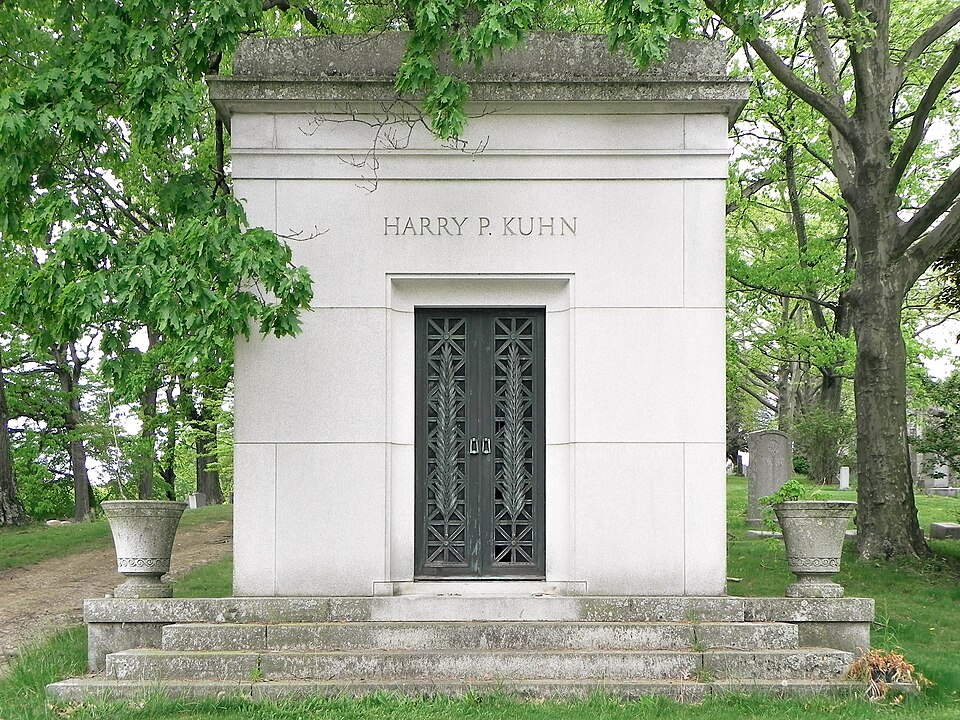

Bronze doors with palm fronds, symbolic of victory over death.
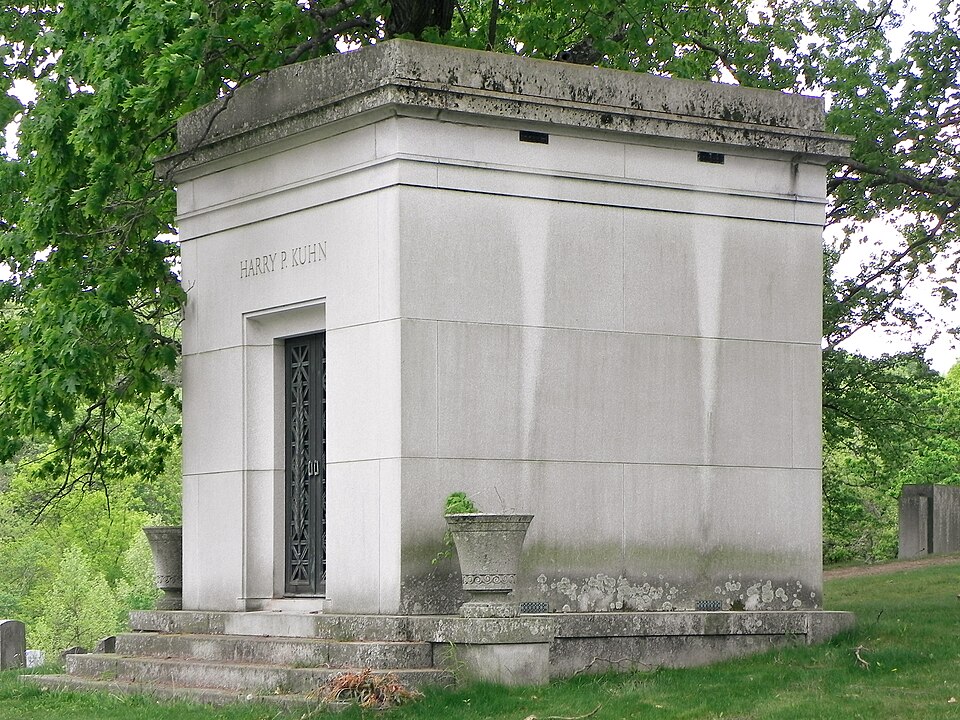

“Angel of the Resurrection” was the sculptor’s name for this bronze angel. Henry Kirke Brown was the sculptor, and he was one of the first Americans to cast his own full-size bronzes. When his statue of De Witt Clinton was unveiled in 1855, it was reported to be the first full-length statue cast in bronze by an American; this angel, however, is older, though a little less than life size (if angels have a life size). By some reckonings, then, this is the first large bronze statue cast in America. It was cast in about 1850, since George Hogg died in 1849.
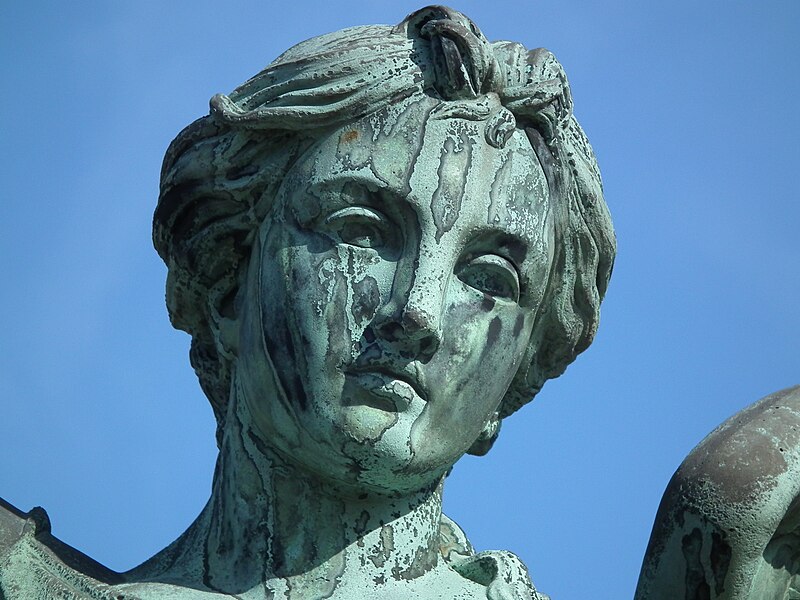



A little bit of Deco Gothic fantasy whose bronze doors are worth admiring.

You can also see summer pictures of the Porter mausoleum, including the exceptionally fine stained glass.
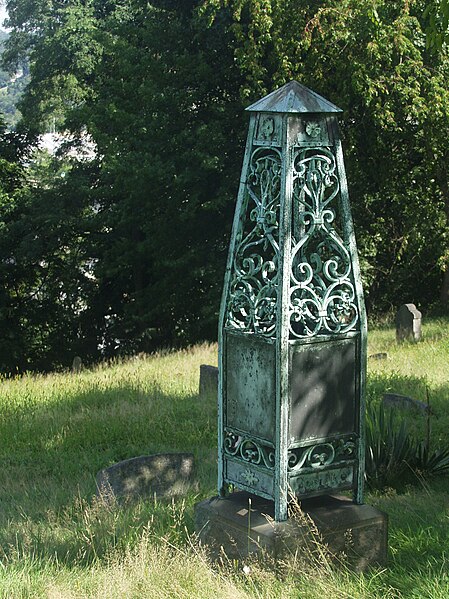
A bronze monument unlike anything else old Pa Pitt has seen around here, and he suspects it may have been done by a craftsman more used to architectural ornamentation than to cemetery monuments. Whoever it was created a fine work, however, and the inscriptions are also good pieces of hand lettering.

Bertha
Danielis
1880–1923
Alexander
Danielis
1875–1949


